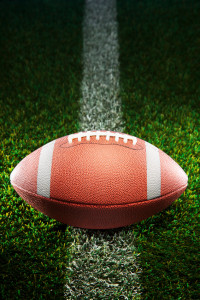Editor’s note: Jeri Smith is president and CEO of Communicus Inc., a Tucson, Ariz., research firm.
 The annual frenzy over Super Bowl advertising began early, with CBS announcing back in early November 2015 that the ad inventory for the game was nearly sold out. Costs per 30 second spot have more than doubled in the past decade, rising from $2.4 million in 2005 to an estimated $5 million for a 30 second spot for the 2016 event. Even with an over 50 percent increase in spot pricing, viewership has increased by less than 15 percent, but marketers still pay the price. Clearly, many advertisers believe in the popularity and reach of the Super Bowl to help take their brands to the next level. And of course, the ad agencies with which they partner are hopeful that they will emerge victorious in the USA Today Ad Meter (which relies on votes from the general public to rate winning ads).
The annual frenzy over Super Bowl advertising began early, with CBS announcing back in early November 2015 that the ad inventory for the game was nearly sold out. Costs per 30 second spot have more than doubled in the past decade, rising from $2.4 million in 2005 to an estimated $5 million for a 30 second spot for the 2016 event. Even with an over 50 percent increase in spot pricing, viewership has increased by less than 15 percent, but marketers still pay the price. Clearly, many advertisers believe in the popularity and reach of the Super Bowl to help take their brands to the next level. And of course, the ad agencies with which they partner are hopeful that they will emerge victorious in the USA Today Ad Meter (which relies on votes from the general public to rate winning ads).
All the hype aside: How do Super Bowl ads fare in building overall brand health (awareness, purchase consideration) with event viewers? Based on research that analyzed the impact of over 150 Super Bowl commercials between 2011 and 2015, here are the five strategies that are most likely to lead to success for 2016 Super Bowl advertisers who strive to build their brands.
Be entertaining and surprising but make it about the brand
Many commercials gain high awareness but fail to communicate the brand in a way that is memorable or persuasive. Examples of ads from 2015 that viewers remember but don’t associate with the brand include Toyota Camry’s “My bold dad” and “How great I am,” the Mexico Avocados, Skittles’ and the Microsoft ads. Conversely, ads engaged and entertained in a way that focused on and built the brand included Beats Music (2014), M&M’s “Love ballad” (2014) and “Just my shell” (2013), Best Buy’s Amy Poehler ad (2011) and H&M’s David Beckham ads in 2012 and 2014.
Introduce a new product or tell them something they didn’t know
In 2015, nearly one-third of the most successful commercials were for new or unfamiliar products, while new product ads comprised only one in seven of the overall mix. In 2014, three of the top four commercials were introducing something new, including Beats Music, Butterfingers Peanut Butter Cups, Wix and Squarespace (although the latter two were hindered by weak branding) Automotive brands that introduced new and out of pattern models succeeded, such as BMW’s i3 electric car, Kia’s high-end luxury 900 model and Mercedes’ entry-level CLA. Anheuser Busch has also successfully leveraged the Super Bowl environment to introduce line extensions including Budweiser Black Crown (2013) and Bud Light Platinum (2012).
Utilize your brand’s advertising equities in a new way
Of those who remember the typical Super Bowl commercial, less than one in four remember the brand. Using a brand’s pre-existing equities in association with the brand advertising helps consumers to immediately associate the commercial with the correct brand. But because it’s in the Super Bowl, the spot also has to breakthrough in a highly competitive advertising environment. Advertisers who’ve succeeded include Chevrolet Trucks’ use of the familiar, “A man and his truck” but with a twist (the hero of the spot was a bull who was looking forward to connecting with the ladies), M&M’s with “Love ballad” (2014) and “Just my shell” (2013), both of which used the familiar M&M’s characters in surprising ways.
Be patriotic and emotional in a manner that’s relevant to your brand
The patriotism theme is fairly common in the Super Bowl but it only works if has a relevant connection to your brand within a captivating and engaging execution. Chrysler had two big hits, both of which produced strong impact for the featured brands, in 2014, with the Dodge Ram “Truck farmers” execution and Jeep’s “Whole again” spot with voice over by Oprah Winfrey.
Implement a consumer-involvement pre-game program that focuses on the brand benefit
Consumer activations can be used to draw attention to the spot but can also produce benefits for the brand in their own right. Examples include McDonalds’ 2015 “Pay with Lovin’” promotion, T-Mobile’s Kim Kardashian Twitter program and Chevrolet’s 2014 “Purple your profile” Facebook promotion (in the latter two cases, the activations were actually more effective in building the brands than were the Super Bowl commercials themselves).
The crop of Super Bowl advertisers for 2016 contains many of the expected brands, including Budweiser, Doritos, Coca-Cola and Pepsi. As usual, a number of brands that signed up last year have elected to put their marketing dollars elsewhere in 2016. However – as proven by the increasing price points and the nearly sold out spot inventory, there seems to be a never-ending list of brands anxious to jump into the fray and try their luck at winning – whatever that means to their marketing and management teams.
